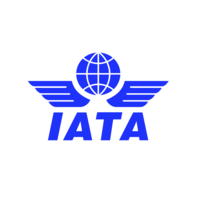October Passenger Demand & Forward Bookings Signal Continuing Recovery
| 01 December 2022 |
| Geneva – The International Air Transport Association (IATA) announced that the recovery in air travel continued in October. Total traffic in October 2022 (measured in revenue passenger kilometers or RPKs) rose 44.6% compared to October 2021. Globally, traffic is now at 74.2% of October 2019 levels. Domestic traffic for October 2022 slipped 0.8% compared to the year-ago period as stringent COVID-related travel restrictions in China dampened global figures. Total October 2022 domestic traffic was at 77.9% of the October 2019 level. Domestic forward bookings remain at around 70% of pre-pandemic level. International traffic climbed 102.4% versus October 2021. October 2022 international RPKs reached 72.1% of October 2019 levels with all markets recording strong growth, led by Asia-Pacific. Forward bookings for international travel increased to around 75% of pre-pandemic levels, following the re-openings announced by multiple Asian economies. “Traditionally, by October we are into the slower autumn travel season in the Northern Hemisphere, so it is highly reassuring to see demand and forward bookings continuing to be so strong. It bodes well for the coming winter season and the ongoing recovery,” said Willie Walsh, IATA’s Director General. |
October 2022 (% year-on-year)World share1RPKASKPLF (%-pt)2PLF (level)3Total Market 100.0%44.6%23.9%11.8%82.0%Africa1.9%81.1%48.0%13.3%72.6%Asia Pacific27.5%36.8%13.9%12.7%75.5%Europe25.0%48.7%28.1%11.8%84.8%Latin America6.5%40.0%36.2%2.3%83.3%Middle East6.6%106.5%51.1%21.2%79.1%North America32.6%31.2%16.3%9.8%86.4%1% of industry RPKs in 2021 2year-on-year change in load factor 3Load Factor Level International Passenger MarketsAsia-Pacific airlines had a 440.4% rise in October traffic compared to October 2021, easily the strongest year-over-year rate among the regions, but off a very low 2021 base. Capacity rose 165.6% and the load factor climbed 39.5 percentage points to 77.7%. International Passenger MarketsAsia-Pacific airlines had a 440.4% rise in October traffic compared to October 2021, easily the strongest year-over-year rate among the regions, but off a very low 2021 base. Capacity rose 165.6% and the load factor climbed 39.5 percentage points to 77.7%. European carriers’ October traffic climbed 60.8% versus October 2021. Capacity increased 34.7%, and load factor rose 13.8 percentage points to 84.8%, second highest among the regions. Middle Eastern airlines saw a 114.7% traffic rise in October compared to October 2021. Capacity increased 55.7% versus the year-ago period, and load factor climbed 21.8 percentage points to 79.5%. North American carriers reported a 106.8% traffic rise in October versus the 2021 period. Capacity increased 54.1%, and load factor climbed 21.4 percentage points to 83.8%. Latin American airlines posted an 85.3% traffic rise compared to the same month in 2021. October capacity climbed 66.6% and load factor increased 8.7 percentage points to 86.0%, the highest among the regions. African airlines’ traffic rose 84.5% in October versus a year ago. October 2022 capacity was up 46.9% and load factor climbed 14.5 percentage points to 71.3%, the lowest among regions. Domestic Passenger MarketsOctober 2022 (% year-on-year)World share1 RPKASKPLF (%-pt)2PLF (level)3Domestic62.3%-0.8%-7.4%5.5%81.9%Australia0.8%292.9%143.2%33.2%87.2%Brazil1.9%9.7%17.0%-5.3%78.9%China P.R.17.8%-58.7%-56.3%-3.8%65.2%India2.0%22.7%16.0%4.5%81.5%Japan1.1%77.4%43.2%13.9%72.0%US25.6%12.1%3.8%6.5%87.8%1% of industry RPKs in 2021 2year-on-year change in load factor 3Load Factor LevelAustralia almost tripled its October domestic traffic from last year (+292.9%); traffic now stands at 15.8% below pre-pandemic levels. China’s domestic RPKs fell 58.7% in October and is now 69.4% below October 2019 levels. October 2022 (% ch vs the same month in 2019)World share in1RPKASKPLF (%-pt)2PLF (level)3Total Market 100.0%-25.8%-25.7%-0.1%82.0%International37.7%-27.9%-28.6%0.8%82.1%Domestic62.3%-22.1%-20.6%-1.7%81.9% The Bottom Line “People are enjoying the freedom to travel, and businesses recognize the importance of air transport to their success. A recent survey of European business leaders doing business across borders showed that 84% could not imagine doing so without access to air transport networks and 89% believed being close to an airport with global connections gave them a competitive advantage. Governments need to pay attention to the message that air travel is fundamental to how we live and work. That reality should drive policies to enable aviation to operate as efficiently as possible while supporting the industry’s 2050 Net Zero emission goals with meaningful incentives to encourage the production of Sustainable Aviation Fuels,” said Walsh. View the October Air Passenger Market Analysis (pdf)For more information, please contact: Corporate Communications Tel: +41 22 770 2967 Email: corpcomms@iata.org Notes for Editors:IATA (International Air Transport Association) represents some 290 airlines comprising 83% of global air traffic. You can follow us at twitter.com/iata for announcements, policy positions, and other useful industry information.Statistics compiled by IATA Economics using direct airline reporting complemented by estimates, including the use of FlightRadar24 data provided under license.All figures are provisional and represent total reporting at time of publication plus estimates for missing data. Historic figures are subject to revision.Domestic RPKs accounted for about 62.4% of the total market; the 7 domestic markets in this report accounted for 53.9% of global RPKs in 2021.Explanation of measurement terms:RPK: Revenue Passenger Kilometers measures actual passenger trafficASK: Available Seat Kilometers measures available passenger capacityPLF: Passenger Load Factor is % of ASKs used.IATA statistics cover international and domestic scheduled air traffic for IATA member and non-member airlines.Total passenger traffic market shares for 2021 by region of carriers in terms of RPK are: Asia-Pacific 27.5%, Europe 25.0%, North America 32.6%, Middle East 6.6%, Latin America 6.5%, and Africa 1.9%.Fly Net Zero |

